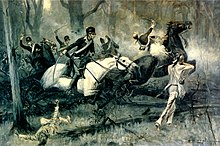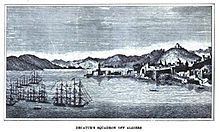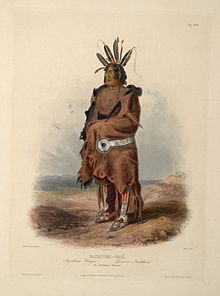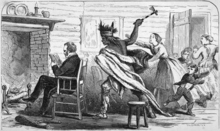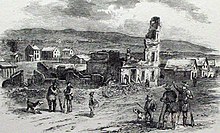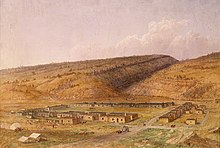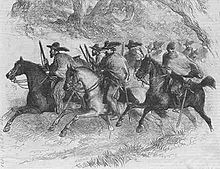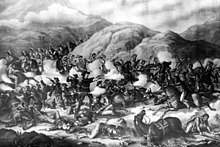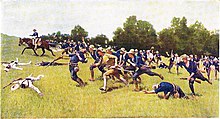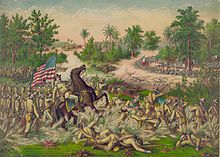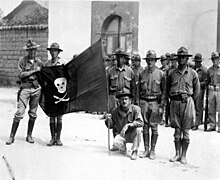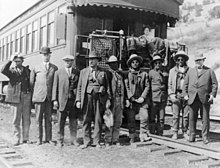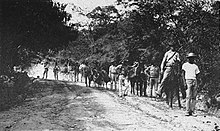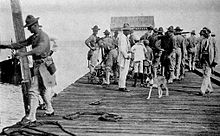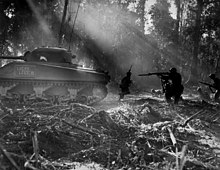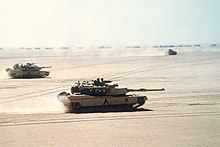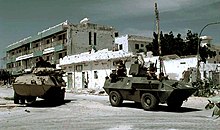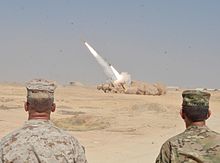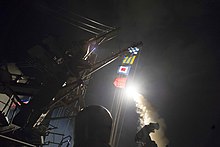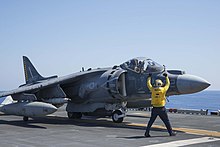US BUDGETARY COSTS: $6.4 TRILLION
The vast economic impact of the post-9/11 wars in Afghanistan, Pakistan, Iraq, Syria, and elsewhere is poorly understood by the US public and policymakers. This paper estimates the budgetary costs of war, including past expenditures and obligations to care for veterans of these wars throughout their lifetimes.
HUMAN COSTS: OVER 801,000
The number of people killed directly in the violence of the wars in Afghanistan, Pakistan, Iraq, Syria, Yemen and elsewhere are approximated here. Several times as many civilians have died due to the reverberating effects of these wars. The methods of accounting are described in this paper.
PEOPLE DISPLACED: 37 MILLION
37 million people have been displaced by the post-9/11 wars in Afghanstan, Pakistan, Iraq, Syria, Libya, Yemen, Somalia and the Philippines.
Did the CONFEDERACY Have BETTER GENERALS?!?!?!
SHOW LESS
Jimmy Carter: US has only enjoyed 16 years of peace in its 242-year history
“Since 1979, do you know how many times China has been at war with anybody?” Carter asked. “None. And we have stayed at war.” The U.S., he noted, has only enjoyed 16 years of peace in its 242-year history, making the country “the most warlike nation in the history of the world,” Carter said. This is, he said, because of America’s tendency to force other nations to “adopt our American principles.”
List of wars involving the United States
18th-century wars
Conflict Combatant 1 Combatant 2 Result for the United States and its Allies American Revolutionary War
(1775–1783)Location: Eastern North America, Southern North America, Gibraltar, India, Caribbean Sea, and the AtlanticThe Battle of Long Island, August 27, 1776
United States
France
Watauga Association
Catawba
Lenape
Choctaw
Great Britain
Loyalists
German Auxiliaries
Iroquois
US-allied victory
- Treaty of Paris (1783)
- Britain recognizes the independence of the United States of America
Cherokee–American wars
(1776–1795)Part of the American Indian WarsLocation: Old Southwest
Abduction of Daniel Boone’s daughter by the Cherokee
United States
Choctaw
Cherokee
US-allied victory Northwest Indian War
(1785–1793)Part of the American Indian WarsLocation: Northwest Territory
United States
Chickasaw
Choctaw
Western Confederacy ListUS-allied victory
- Treaty of Greenville (1795)
- American occupation of the Northwest Territory
Quasi-War
(1798–1800)Location: Atlantic Ocean, the Caribbean, the Indian Ocean and the MediterraneanUnited StatesCo-belligerent:
Great Britain
France
Convention of 1800
- Peaceful cessation of Franco-American alliance
- End of French privateer attacks on American shipping
- American neutrality and renunciation of claims by France
19th-century wars[edit]
Conflict Combatant 1 Combatant 2 Result for the United States and its Allies First Barbary War
(1801–1805)Part of the Barbary WarsLocation: Mediterranean Sea off the coast of Tripoli
Lieutenant Presley O’Bannon at Derna, April 1805
United States[2]
Sweden[2]
Sicily[2]
Malta[2]
Portugal[2]
Morocco[2]
Tripolitania[3]
Morocco[3]
US-allied victory Tecumseh’s War
(1811)Part of the American Indian Wars and the War of 1812Location: Northwest River Ohio
United States
Tecumseh’s Confederacy ListUS victory War of 1812
(1812–1815)Location: Eastern and Central North AmericaGeneral Andrew Jackson stands on the parapet of his makeshift defenses as his troops repulse attacking Highlanders, by painter Edward Percy Moran in 1910.
United States
Choctaw Nation
Cherokee Nation
Creek AlliesUnited Kingdom
List
Spain (1814)
Inconclusive/Other Result
- Treaty of Ghent
- Military stalemate; both sides’ invasion attempts repulsed
- Status quo ante bellum
- Defeat of Tecumseh’s Confederacy
- Burning of Washington including the White House and the Capitol
Creek War
(1813–1814)Part of the American Indian Wars and the War of 1812Location: Southern United States
The Battle of Horseshoe Bend, 1814
United States
Lower Creeks
Cherokee Nation
Choctaw Nation
Red Stick Creek US-allied victory Second Barbary War
(1815)Part of the Barbary WarsLocation: Mediterranean Sea and the Barbary States
United States
Deylik of Algiers
US victory First Seminole War
(1817–1818)Part of the Seminole Wars and the American Indian WarsLocation: Pensacola, Spanish Florida
Barracks and tents at Fort Brooke near Tampa Bay
United States
Seminole
US victory
- Spain cedes Spanish Florida to the United States in the Adams–Onís Treaty of 1819
- The United States forcibly relocates Seminole in northern Florida to a reservation in the center of the peninsula in the Treaty of Moultrie Creek of 1823
Arikara War
(1823)Part of the American Indian WarsLocation: Missouri River
United StatesSioux
Arikara Inconclusive/Other Result
- White Peace treaty agreed by US Col Leavenworth[4]
Winnebago War
(1827)Part of the American Indian WarsLocation: Illinois and Michigan Territory
United States
Choctaw Nation
Prairie La Crosse Ho-Chunks
with a few alliesUS-allied victory
- Ho-Chunks cede lead mining region to the United States
Black Hawk War
(1832)Part of the American Indian WarsLocation: Illinois and Michigan Territory
Native women and children fleeing the Battle of Bad Axe
United States
Ho-Chunk
Menominee
Dakota
PotawatomiBlack Hawk’s British Band
Ho-Chunk and Potawatomi alliesUS-allied victory
- End of Native armed resistance to U.S. expansion in the Old Northwest
- Black Hawk Purchase (1832)
- The United States purchases Potawatomi land in the Treaty of Tippecanoe (1832)
- The United States purchases the rest of Potawatomi land west of the Mississippi River in the Treaty of Chicago (1833)
Texas Revolution
(1835–1836)Location: TexasRepublic of Texas
- Out of the Texan soldiers serving from January through March 1836, 78% had arrived from the United States after October 2, 1835.[Note 1][5]
Mexican Republic
Texan victory
- The Republic of Texas gains its independence.
- Texas is annexed into the United States in 1845.
Second Seminole War
(1835–1842)Part of the Seminole Wars and the American Indian WarsLocation: Florida, United States
United States
Seminole US victory
- Approximately 3,800 Seminoles transported to the Indian Territory
- Approximately 300 remain in Everglades
Mexican–American War
(1846–1848)Location: Texas, New Mexico, California and Mexico2nd Dragoons charge the enemy at the Battle of Resaca de la Palma, 1846
United States
California Republic
Mexico
US-allied victory
- Treaty of Guadalupe Hidalgo
- Mexican Cession
- Mexican recognition of US sovereignty over Texas and California (among other territories)
Cayuse War
(1847–1855)Part of the American Indian WarsLocation: Oregon
United States
Cayuse US victory
- Cayuse reduced in numbers and forced to cede most of their lands
Apache Wars
(1851–1900)Part of the Texas–Indian wars and the American Indian WarsLocation: Southwestern United States
U.S. Cavalry dash for cover while fighting Apaches, by F. Remington
United States
Apache
Ute
YavapaiUS victory
- Apaches moved to reservations
Bleeding Kansas
(1854–1861)Location: Kansas and MissouriSacking of Lawrence in 1856
Anti-slavery settlers
(Free-Staters)Pro-slavery settlers (Border Ruffians) Free-Stater victory.
- Kansas admitted as a free state on January 29, 1861.
Puget Sound War
(1855–1856)Part of the American Indian WarsLocation: Washington
United States
SnoqualmieNisqually
Muckleshoot
Puyallup
Klickitat
Haida
TlingitUS victory
- Indians relocated to Siletz, Grand Ronde and Coast Reservations[citation needed]
Rogue River Wars
(1855–1856)Location: Rogue ValleyUnited States
Rogue River people US victory
- Indians relocated to Siletz, Grand Ronde and Coast Reservations
Third Seminole War
(1855–1858)Part of the Seminole Wars and the American Indian WarsUnited States
Seminole US victory
- By late 1850s, most Seminoles forced to leave their land; a few hundred remain deep in the Everglades on land unwanted by white settlers
Yakima War
(1855–1858)Part of the American Indian WarsLocation: Washington Territory
Seattleites evacuate to the town blockhouse as USS Decatur opens fire on advancing tribal forces.
United States
SnoqualmieYakama
Walla Walla tribe
Umatilla tribe
Nez Perce tribe
Cayuse tribeUS victory Second Opium War
(1856–1859)Part of the Opium WarsLocation: China
Palikao’s bridge, on the evening of the battle, by Émile Bayard
British Empire
French Empire
United States
China
US victory
- Treaties of Tientsin
- Kowloon Peninsula and Stonecutters Island ceded to the United Kingdom as part of British Hong Kong
Utah War
(1857–1858)Part of the Mormon warsLocation: Utah Territory and Wyoming
United States
Deseret/Utah Mormons (Nauvoo Legion) Inconclusive/Other Result
- Resolution through negotiation
- Brigham Young replaced as governor of the territory
- Full amnesty for charges of sedition and treason issued to the citizens of Utah Territory by President James Buchanan on the condition that they accept American Federal authority
Navajo Wars
(1858–1866)Part of the American Indian WarsLocation: New Mexico
United States
Navajo Nation
US victory
- Long Walk of the Navajo
- Navajos moved to reservations
John Brown’s Raid on Harpers Ferry
(1859)Part of pre-Civil War conflictsLocation: West Virginia
Harper’s Weekly illustration of U.S. Marines attacking John Brown’s “Fort” Teresa Baine
United States
Abolitionist Insurgents US victory First and Second Cortina War
(1859–1861)Location: Texas and MexicoUnited States
Cortinista bandits
US-allied victory Paiute War
(1860)Part of the American Indian WarsLocation: Pyramid Lake, Nevada
United States
Paiute
Shoshone
BannockUS victory American Civil War
(1861–1865)Location: Southern United States, Indian Territory, Northeastern United States, Western United States, Atlantic OceanUnited States
Confederate States
Cherokee Nation
Choctaw Nation
Chickasaw Nation
Muskogee Nation
Seminole Nation
Comanche Nation
US victory
- Dissolution of the Confederate States
- U.S. territorial integrity preserved
- Beginning of the Reconstruction Era
- U.S. Federal government expands further control over land and railroad rights in the Indian Territory.
Yavapai Wars
(1861–1875)Part of the American Indian WarsLocation: Arizona
United States
Yavapai
Apache
Yuma
MohaveUS victory Dakota War of 1862
(1862)Part of the American Indian WarsUnited States
Dakota Sioux
US victory Colorado War
(1863–1865)Part of the American Indian WarsUnited States
Cheyenne
Arapaho
Sioux
Inconclusive/Other Result
- Military and congressional hearings against John Chivington
Snake War
(1864–1868)Part of the American Indian WarsLocations: Oregon, Nevada, California, and Idaho
United States
Paiute
Bannock
ShoshoneUS victory Powder River War
(1865)Part of the American Indian WarsLocation: Powder River State
United States
Sioux
Cheyenne
Arapaho
Inconclusive Red Cloud’s War
(1866–1868)Part of the American Indian WarsLocation: Powder River State
United States
Crow Nation
Lakota
Cheyenne
Arapaho
Lakota-allied victory
- Treaty of Fort Laramie (1868)
- Legal control of Powder River Country ceded to Native Americans
- Creation of the Great Sioux Reservation (including the Black Hills)
Comanche Campaign
(1867–1875)Part of the American Indian WarsLocation: Western United States
United States
Cheyenne
Arapaho
Comanche
KiowaUS victory Modoc War
(1872–1873)Part of the American Indian WarsLocation: California and Oregon
United States
Modoc
US victory Red River War
(1874–1875)Part of the American Indian WarsLocation: Texas
United States
Cheyenne
Arapaho
Comanche
KiowaUS victory
- End to the Texas-Indian Wars
Las Cuevas War
(1875)Location: Texas and MexicoUnited States
Mexican bandits US victory
- Cattle returned to Texas
Great Sioux War of 1876
(1876–1877)Part of the American Indian WarsUnited States
Lakota
Dakota Sioux
Northern Cheyenne
Arapaho
US victory
- Legal control of Powder River Country ceded to the United States
Buffalo Hunters’ War
(1876–1877)Part of the American Indian WarsUnited States
Comanche
ApacheUS victory Nez Perce War
(1877)Part of the American Indian WarsUnited States
Nez Perce
PalouseUS victory Bannock War
(1878)Part of the American Indian WarsUnited States
Bannock
Shoshone
PaiuteUS victory Cheyenne War
(1878–1879)Part of the American Indian WarsLocation: Oklahoma, Kansas, Nebraska, South Dakota and Montana
United States
Cheyenne
US victory Sheepeater Indian War
(1879)Part of the American Indian WarsLocation: Idaho
United States
Shoshone US victory Victorio’s War
(1879–1881)Part of the American Indian WarsLocation: Mexico
United States
Mexico
Apache US-allied victory White River War
(1879–1880)Part of the American Indian WarsLocation: Colorado
United States
Ute US victory Pine Ridge Campaign
(1890–1891)Part of the American Indian WarsLocation: South Dakota
United States
Sioux
US victory Garza Revolution
(1891–1893)Location: Texas and MexicoMexico
United States
Garzistas US-allied victory Yaqui Wars
(1896–1918)Part of the American Indian WarsUnited States
Mexico
Yaqui
Pima
OpataUS-allied victory Second Samoan Civil War
(1898–1899)Location: SamoaSamoa
United States
Mataafans
Germany
Inconclusive/Other Result
- Allies and Rebels compromise for peace Tripartite Convention
- United States acquires American Samoa
- United Kingdom withdraws claim in exchange for concessions in the Solomon Islands
- Germany acquires German Samoa
- Mata’afa Iosefo becomes paramount chief of Samoa
Spanish–American War
(1898)Location: Cuba, Puerto Rico, Philippines and GuamUnited States
Cuban Revolutionaries
Filipino Revolutionaries
Spain
US-allied victory
- Treaty of Paris
- Protectorate over Cuba
- Collapse of the Spanish Empire
Philippine–American War
(1899–1902)Location: PhilippinesKurz & Allison print of the Battle of Quingua.
1899–1902
United States
1902-1906
United States
1899–1902
Philippine Republic
Limited Foreign Support:
Empire of Japan
1902-1906
Tagalog Republic
US victory
- Occupation of the Philippines
- Establishment of the Insular Government of the Philippine Islands
- General Emilio Aguinaldo captured
- Dissolution of the First Philippine Republic
Moro Rebellion
(1899–1913)Location: PhilippinesUnited States
Moro
Remnants of the Sulu Sultanate
US victory Boxer Rebellion
(1899–1901)Location: ChinaUnited Kingdom
Russia
Japan
France
United States
Germany
Italy
Austria-Hungary
Righteous Harmony Society (Boxers)
China
US-allied victory
- Signing of the Boxer Protocol
- Provisions for foreign troops to be stationed in Beijing
20th-century wars[edit]
- ^ Advisory role from the forming of the MAAG in Vietnam to the Gulf of Tonkin incident.
- ^ Direct U.S. involvement ended in 1973 with the Paris Peace Accords. The Paris Peace Accords of January 1973 saw all U.S forces withdrawn; the Case–Church Amendment, passed by the U.S Congress on 15 August 1973, officially ended direct U.S military involvement .
- ^ The war reignited on December 13, 1974 with offensive operations by North Vietnam, leading to victory over South Vietnam in under two months.
21st-century wars[edit]
Conflict Combatant 1 Combatant 2 Result for the United States and its Allies War in Afghanistan
(2001–present)Part of the War on Terror and the War in Afghanistan (1978–present)Location: Afghanistan
Resolute Support Mission
Afghanistan
United States
Canada
United Kingdom
Australia
New Zealand
Croatia
Czech Republic
Denmark
Georgia
Germany
Italy
Romania
Spain
Turkey
Formerly:
ISAF
Taliban
Allied groups
HIG
al-Qaeda
Islamic Jihad Union[14]
Taliban splinter groups
- Wilayat Khorasan (ISIL-K)
2001 Invasion:
Islamic Emirate of Afghanistan
Ongoing
- United States invasion of Afghanistan (2001)
- List of drone strikes in Afghanistan (2001)
- Destruction of al-Qaeda and Taliban militant training camps (2001)
- Fall of the Taliban government (2001)
- Establishment of the Islamic Republic of Afghanistan under the Karzai administration
- Start of Taliban insurgency
- Drone strikes in Pakistan
- Death of Osama bin Laden in May 2011
- Death of Mohammed Omar in July 2013
- Over two-thirds of Al-Qaeda’s operatives killed or captured
- International Security Assistance Force (ISAF) disbanded in December 2014
- Commencement of Resolute Support Mission in December 2014
- All US troops to withdraw by September 11, 2021
Iraq War
(2003–2011)Part of the War on TerrorLocation: Iraq
United States
Iraq
United Kingdom
Australia
South Korea
Denmark
Italy
Georgia
Poland
Spain
Netherlands
Ukraine
Romania
MNF–I
Ba’ath Loyalists
Islamic State of Iraq
al-Qaeda in Iraq
Mahdi Army
Special Groups
IAI
Ansar al-Sunnah
2003 Invasion:
Iraq
Inconclusive/other result[15]
- Invasion and occupation of Iraq
- Overthrow of Ba’ath Party government
- Execution of Saddam Hussein
- Emergence of significant insurgency, rise of al-Qaeda in Iraq, and severe sectarian violence[16]
- Subsequent reduction in violence and depletion of al-Qaeda in Iraq[17][18]
- Establishment of democratic elections and formation of new Shia-led government
- U.S.–Iraq Status of Forces Agreement
- Withdrawal of U.S. forces from Iraq in 2011
- Stronger Iranian influence in Iraq[19][dubious ][20][21][22]
- Escalation of sectarian insurgency after U.S. withdrawal leading to the rise of the Islamic State of Iraq and the Levant, the successor of al-Qaeda in Iraq[23][24]
- Iraqi Civil War (2013–2017)
- Return of US forces to Iraq in 2014
Second U.S. Intervention in the Somali Civil War
(2007–2021)Part of the Somali Civil War (1991–present) and the War on TerrorLocation: Somalia and Northeastern Kenya
Somalia
United States
United Kingdom
Kenya
Ethiopia
AMISOM
United Nations
Al-Shabaab
Hizbul Islam
Inconclusive/Other Result
- Drone strikes in Somalia
- Raids against al-Shabaab militants conducted by U.S. Special Operations Forces
- African Union Intervention
- U.S. backed Ethiopian invasion in 2006
- Kenyan intervention
- Newly formed federal government established in 2012
- Power struggle within Al-Shabaab
- Majority of US Troops withdraw in January 2021
Operation Ocean Shield
(2009–2016)Part of the War on TerrorLocation: Indian Ocean
A tall plume of black smoke rises from a destroyed pirate vessel that was struck by USS Farragut in March 2010.
NATO
United States
Malaysia
Norway
United Kingdom
New Zealand
Denmark
Netherlands
Italy
South Korea
India
Russia
China
Somali pirates US-allied victory
- Number of pirate attacks dramatically decreased
- The US Office of Naval Intelligence have officially reported that in 2013, only 9 incidents of piracy were reported and that none of them were successfully hijacked[citation needed]
- Piracy drops 90%[27]
International intervention in Libya
(2011)Part of the Libyan Crisis and the First Libyan Civil WarLocation: Libya
NATO
United States
United Kingdom
Belgium
Bulgaria
Canada
Denmark
France
Greece
Italy
Netherlands
Norway
Romania
Spain
Turkey
Sweden
Jordan
Qatar
United Arab Emirates
Libya
US-allied victory
- Overthrow of the Gaddafi government and the killing of Muammar Gaddafi
- Assumption of interim control by National Transitional Council (NTC)
- Diplomatic recognition of NTC as sole governing authority for Libya by 105 countries, UN, EU, AL and AU
- Post-civil war violence in Libya leading to the second civil war in 2014[28]
Operation Observant Compass
(2011–2017)Part of the War on TerrorLocation: Uganda
United States
Uganda
DR Congo
Central African Republic
South Sudan
Lord’s Resistance Army
Ongoing
- Founder and leader of the LRA Joseph Kony goes into hiding
- Senior LRA commander Dominic Ongwen surrenders to American forces in the Central African Republic and is tried at the Hague[7][8]
- Majority of LRA installations and encampments located in South Sudan and Uganda abandoned and dismantled
- Small scale LRA activity continues in eastern DR Congo, and the Central African Republic
American-led intervention in Iraq
(2014–present)Part of Operation Inherent Resolve, the Iraqi Civil War, the Spillover of the Syrian Civil War, the War on Terror and the International ISIS campaignLocation: Iraq
General Stephen J. Townsend observes a HIMARS strike that destroyed a building near Haditha, September 2016
United States
Iraq
Iraqi Kurdistan
Australia
New Zealand
Belgium
Canada
Denmark
France
Germany
Jordan
Morocco
Netherlands
United Kingdom
Turkey
Islamic State of Iraq and Syria
Ongoing
- Tens of thousands of ISIL fighters killed
- American-led forces launch over 13,300 airstrikes on ISIL positions in Iraq
- Heavy damage dealt to ISIL forces, ISIL loses 40% of its territory in Iraq by January 2016, and all of its territory in Iraq in December 2017
- Multinational humanitarian and arming of ground forces efforts
- 200 ISIL created mass graves found containing up to 12,000 people[29]
- Ongoing US-led Coalition advising and training of Iraqi and Kurdish ground forces
- US maintains limited military presence in Iraq
American-led intervention in Syria
(2014–present)Part of Operation Inherent Resolve, the Syrian Civil War, the War on Terror and the International ISIS campaignLocation: Syria
USS Ross fires Tomahawk missiles towards Shayrat Military Base, during the 2017 retaliatory strike against the Syrian government.
United States
Autonomous Administration of North and East Syria
CJTF-OIR Members:
United Kingdom
France
Australia
New Zealand
Canada
Jordan
Denmark
Netherlands
Belgium
Lebanon
Morocco
Saudi Arabia
United Arab Emirates
Qatar
Bahrain
Israel (limited involvement; against Hezbollah and government forces only)
Formerly:
Free Syrian Army (2011–2017)
Islamic State of Iraq and Syria
al-Qaeda linked groups:
Syria (limited encounters with US and Israel)
Supported by:
Russia
Iran
Hezbollah
Syria-allied victory
- Over 11,200 American and allied airstrikes hit ISIS and other extremist groups within Syria
- Thousands of ISIS targets destroyed and thousands more militants captured or killed
- ISIL lose Mosul and Raqqa (2017), then other most of territory in Iraq and then Syria
- Syrian government Chemical attack in Ghouta (2013) leading to OPCW-UN Joint Mission in Syria
- American support for anti-government rebels
- Deployment of U.S. Marines and Special Forces
- Massive amounts of human rights violations and war crimes, in particular by Syrian government forces
- Semi-regular chemical attacks attributed to the Assad regime leads to condemnation and threats of measures to enforce the chemical weapons convention and the Geneva protocol to which Syria is a party. Chemical attack in Khan Shaykhun results in a retaliatory naval strike on the Syrian government-controlled Shayrat Airbase, Douma chemical attack results in retaliatory strikes/
- Various confrontations and airstrikes, including a downing of a Syrian SU-17 between the United States and Syrian government and the shoot down of a Turkish F-4 by the Syrian government
- Multiple incidents between Israel and Syria, including several Syrian S-200 missiles launched toward Israeli fighter jets during an Israeli Air Force mission inside Syrian territory, and an Israeli F-16 shot down by Syrian Air Defense forces after retaliatory strikes against Iranian targets near Damascus after a Syrian drone crossed into Israeli airspace
- ISIS detainee crisis takes hold in northern Syria[30]
- Civilian deaths due to Coalition airstrikes in Syria and Iraq: over 1,300 according to Coalition, 8,267–13,168 according to independent estimates.[31]
American intervention in Libya
(2015–2020)Part of the Second Libyan Civil War, the War on Terror, and the International ISIS CampaignLocation: Libya
USS Wasp conducts flight operations in Operation Odyssey Lightning.
United States
Libya
Islamic State in Libya
US-allied Victory
- Liberation of Sirte
- Hundreds of airstrikes carried out in Libya against Islamic State affiliated militant groups
See also[edit]
Oil: The Issue of American Intervention (1975)
In Jan 1975, Commentary Magazine argued that the US should threaten to invade the Persian Gulf if they did not:
- agree to price oil exclusively in dollars, thereby generating demand for dollars
- save oil profits in US Treasury bills, thereby financing the US debt
- buy American weapons, including surplus Vietnam war equipment, and future US weapons, thereby financing the military industrial complex
There remains the argument that military intervention in the Persian Gulf would on moral grounds alone not be countenanced by domestic public opinion. Nor is it only the public that would presumably find in the act a manifestation of complete moral bankruptcy. One has the distinct impression that the foreign-policy elite shares this view and that in the certitude with which the public’s supposed reaction is diagnosed there is something close to a wish-fulfilling prophecy. It is a curious reaction coming from those who once found no great difficulty, moral or otherwise, in supporting the intervention in Vietnam or who, in finally abandoning their support for intervention, did so not on moral grounds, but because they concluded Vietnam could not have a successful outcome or that, whatever the outcome, the costs had become disproportionate to the interests at stake. Perhaps their present reaction to the prospect of armed intervention in the Persian Gulf is not so curious, though, given this record. It is not surprising that, having lacked a sense of balance, moral and otherwise, in that most painful experience, they should lack a sense of balance today, and that we should find the law of compensation—or rather of overcompensation—at work.
At issue here is not whether there is some clear moral or legal basis for justifying armed intervention in the Persian Gulf, but whether public opinion would be morally outraged by the action. Though it is not uncommon to find them confused, these are two quite different questions. There is no need for positive moral approval, let alone moral fervor, by the public so long as it consents to the need for the action. There may even be considerable gain in the absence of that element which has so often attended policy in the past. The difficulty, of course, is that the public has been long habituated to support the use of force only in cases which have been made to appear as necessary for the containment of Communism, in turn equated with the nation’s security. Could the public be induced, in the shadow of Vietnam, to support a military intervention that bore no apparent or tangible relation to the containment of Communism, itself a factor of diminishing importance in determining the public’s disposition? No one can say. Put in the abstract, the question itself may be rather meaningless. It would take on meaning only after a concerted effort had been made to persuade the public that the alternatives to intervention were laden with dangers to the nation’s well-being. Even then it remains an open question whether an administration could obtain public support, or tolerance, for intervention in the absence of events at home that, once plainly visible, would require little further effort in persuasion. In this instance, the choice might well be between a public that would oppose intervention so long as the interests at stake were not clear, and could not readily be made clear, and a public that would support intervention only when these interests had unfortunately become only too clear.
The point is worth emphasis that we simply do not know what might bring the public to support intervention in the Persian Gulf. If the public viewed such intervention as another Vietnam, they would most assuredly oppose it. But if intervention were to promise success at relatively modest cost, opinion might well move in the direction of support, and particularly if unemployment were to rise to 8 or 9 per cent. Moreover, in this instance, by contrast to Vietnam, the existence of an all-volunteer military force would preclude the painful issues once raised by the draft. Nor is it at all clear that the Left would take the same position toward intervention in the present case as it did toward Vietnam. For the effects of the current oil price on many poor countries do not endear the major oil producers to much of the Left. The relative ease with which Vietnam could be depicted as an attempt to preserve American domination over the developing states, a domination alleged to serve only American interests, would be difficult to repeat today, and this despite the inadequately perceived effects of the oil crisis.



